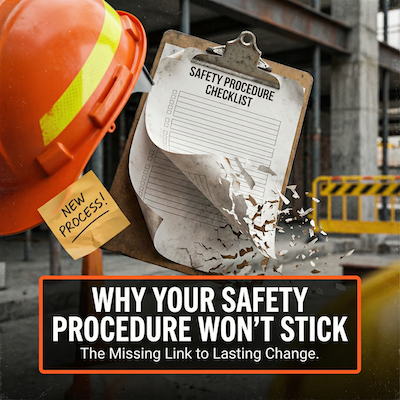The Productivity Commission's Report: A Wake-Up Call for the Australian Construction Industry
The Productivity Commission recently released its final report, which highlights the productivity crisis in the Australian construction industry. Despite being Australia's fourth-largest industry, productivity performance has worsened over the past 30 years. The Australian Constructors' Association (ACA) CEO's email underscores the urgency of addressing this issue, as a staggering $47 billion in lost economic opportunity arises every year from construction productivity lagging behind other major industries. The email calls for the government to act as an educated buyer and reform procurement processes to maximise overall project value. Furthermore, the ACA has developed the Future Australian Infrastructure Rating (FAIR) initiative to expedite reforms and encourage learning and innovation within the industry.

The Role of Safety in the Construction Productivity Crisis
Safety and productivity have long been the Siamese twins of the construction industry—joined at the hip, but often pulling in opposite directions. Traditional safety management methods, with their punitive focus on compliance, have inadvertently demotivated workers, leading to disengagement and, ironically, an increase in injuries. As the sun sets on these outdated approaches, it is time to consider alternative strategies that foster a more productive and safe work environment.
A New Approach to Safety: Rewarding Safe Behaviour with Scratchie
Enter Scratchie, the app that aims to revolutionise safety management by rewarding safe behaviour. Developed by two veterans of the Australian construction industry, Scratchie is the offspring of a safety intervention that proved successful in the fit-out of Australia's first Apple Store. With Scratchie, supervisors can issue awards to workers who demonstrate a positive safety attitude, improving morale and safety performance on-site. The app's appeal lies in its ability to encourage safety compliance through positive reinforcement, rather than the traditional stick-wielding approach.
Embracing Technology: Out with the Old, In with the New
The construction industry must keep pace with technological advancements to remain competitive. Investing in and adopting modern technologies, such as Building Information Modelling (BIM), can streamline processes, reduce errors, and improve collaboration between project stakeholders. As the saying goes, "You can't expect to meet the challenges of today with yesterday's tools and expect to be in business tomorrow."

Rethinking Workforce Training through Microlearning and Simulation
The age-old solution of "more training" has been trotted out like a show pony whenever productivity issues arise. Unfortunately, the pony has grown tired, and the audience is no longer impressed. To revitalise workforce training, construction leaders should consider microlearning and simulation-based training. These methods offer bite-sized, targeted skill development and hands-on experience, leading to improved retention and application of knowledge in the field. If a picture is worth a thousand words, then a simulation might just be worth a thousand PowerPoint slides.
Implementing Lean Construction Through Last Planner System®
Lean construction may be the kale of the construction world—touted as a panacea for all woes, yet often misunderstood or poorly implemented. However, the Last Planner System® (LPS), a proven lean construction method, offers practical benefits that can genuinely improve productivity. By focusing on reliable planning, continuous improvement, and value-based decision-making, LPS can help construction teams trim the fat and operate more efficiently. After all, who wouldn't want a leaner, fitter construction project?
Fostering Collaborative Problem Solving with Integrated Project Delivery (IPD)
"Strengthening collaboration and communication" is a phrase that has been bandied about so often that it has lost almost all meaning. To give it some substance, let's introduce Integrated Project Delivery (IPD), a method that promotes collaboration and communication among project stakeholders from the outset. By engaging architects, engineers, contractors, and clients in a shared risk and reward model, IPD encourages cooperative problem solving and innovation throughout the project lifecycle. In essence, IPD replaces the tired mantra of "talking more" with a more tangible approach to collaboration that benefits all parties involved.
Educated Government Procurement: Nurturing Innovation and Best Practices
While calls for increased government and industry collaboration are as frequent as cricket matches in the summer, it is essential to discuss the role of the government as an educated customer. Governments must recognise the value of innovative solutions and best practices when procuring construction services. By selecting projects based on demonstrated performance and commitment to improvement, governments can encourage the industry to adopt proven strategies and cutting-edge technologies. In turn, this will lead to a more competitive and productive construction sector.
Conclusion
In conclusion, the Productivity Commission's report serves as a stark reminder that the Australian construction industry must undergo a transformation to escape its productivity quagmire. By rethinking safety management through platforms like Scratchie, embracing technology, adopting innovative training methods, implementing lean construction principles, and fostering collaborative problem-solving through IPD, the industry can begin to rise to the challenge. Moreover, the government, as an educated customer, has a pivotal role to play in nurturing innovation and best practices, ultimately driving the sector towards increased productivity. As the construction industry awakens from its slumber, we can only hope that these strategies will not only be acknowledged but wholeheartedly embraced by industry leaders and policymakers alike. After all, the future of the Australian construction sector—and the $47 billion in untapped potential—depends on it.










.svg)
